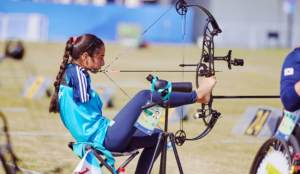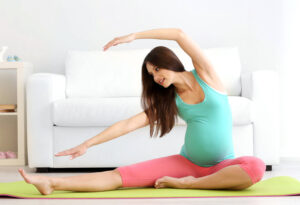Know more about the best exercises to be performed during pregnancy
Pregnancy can be seen as a great time for lifestyle modifications. Moderate to vigorous physical activity (MVPA) are proven to be beneficial for both mother and foetus in most cases with the necessary modifications. During pregnancy, women who have absolute contraindications to exercise may continue with their usual daily activities but should avoid moderate and vigorous activities. Women with relative contraindications should discuss their potential participation in these activities with their obstetric care provider prior to beginning or continuing with their exercise programs.
Advantages of Antenatal Exercise
Exercise helps to relax you and make you feel better. According to experts, it improves the circulation for mother and baby. It reduces aches and pains of pregnancy. Here are some advantages of antenatal exercise:
- Reduces morning sickness.
- Reduces insomnia, anxiety and stress.
- Reduces other pregnancy-related complaints, eg: fatigue, leg cramps, oedema of extremities, etc.
- Prevents excessive weight gain during pregnancy.
- Improves muscle strength.
- Improves core stability.
- Maintains muscle length and flexibility.
- Improves glycemic control
- Improves posture.
- Enhances relaxation.
- Prepares for physical demands of labour.
Precautions
While regular exercise is good for pregnant women, there are certain tips and precautions they should keep in mind during exercising. Some of such precautions have been listed below:
- Exercises should be performed under supervision
- Avoid supine lying more than 5 minutes after 3 months of gestation.
- Do not hold your breath (Valsalva’s maneuver)
- Do not change positions quickly.
- Stay hydrated at all times (before, during and after workouts).
- Follow proper warm-up and cool-down process.
- Ensure bladder emptying before workouts.
Avoid exercises which demand higher balancing and different groups of muscles.
The pregnancy exercise guide
Cardiovascular Exercise
The intensity of the workout should be decided by an assessment on pre-pregnancy fitness level. It is important to choose any aerobic activity based on one’s interests, such as walking, swimming, hiking etc. So if walking is the only cardio workout done by an individual, it can be practiced 20 to 30 minutes 3 to 4 times a week safely.
Pectoral stretch
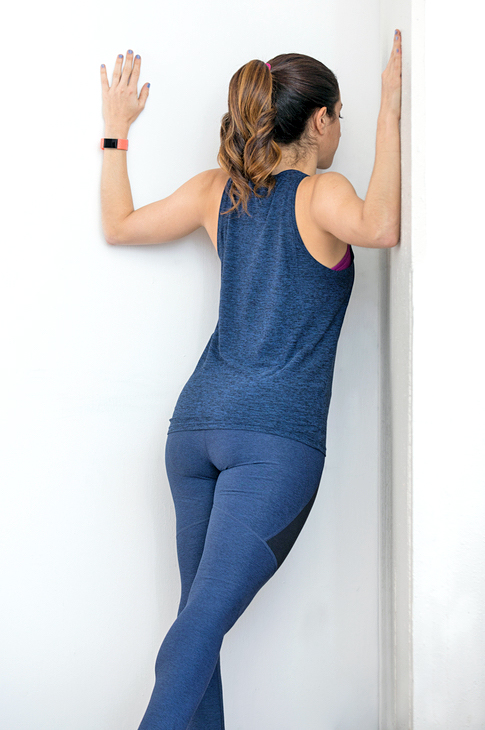
- This exercise helps in the opening of the chest and prevents the development of round shoulders.
- Nudge the ball in the corner or near the wall.
- Sit in a comfortable position keeping the back on the ball.
- Keep your hands by the side or clasp them behind your head.
- Rest the head on ball and let the elbows expand and open your chest.
- Repeat 3 to 5 times.
Piriformis stretch
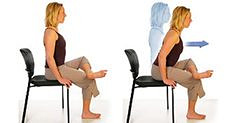
- Piriformis muscle plays an important role in pelvic stabilization and ADL’s
- Sit on the chair with neutral pelvis.
- Now keep your foot over the opposite knee and bend forward from the hips keeping your pelvis neutral until you feel the stretch.
- Hold it for 20 to 30 seconds.
- Repeat for the other side as well.
- Do 3 to 5 sets.
Hamstring stretch
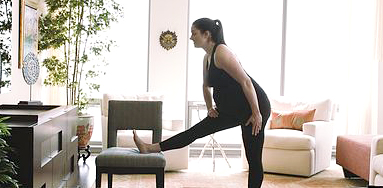
- Shortening of hamstring can cause back pain and pelvic misalignment.
- This stretch can be performed in various positions and bilaterally or unilaterally.
- Sit in long sitting position, bend one knee and try to reach your extended leg as much as you can.
- Hold it for 20 to 30 seconds and repeat it for 3 to 5 times on each side.
- During first trimester, supine lying hamstring stretch can also be done
Calf stretch
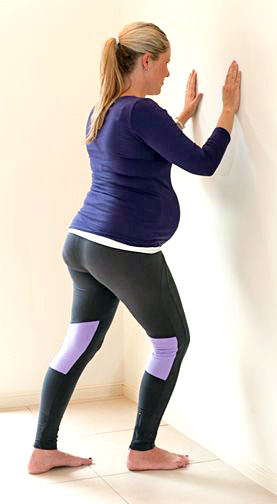
- Place rolled towel, mat or foam roller on the floor.
- Place ball of the foot on the towel, mat or roller and heel on the floor. Keep the leg straight. Hold this position for 20-30 seconds.
- Repeat on the other side and perform 3-5 sets on each side
Butterfly / Tailor Pose
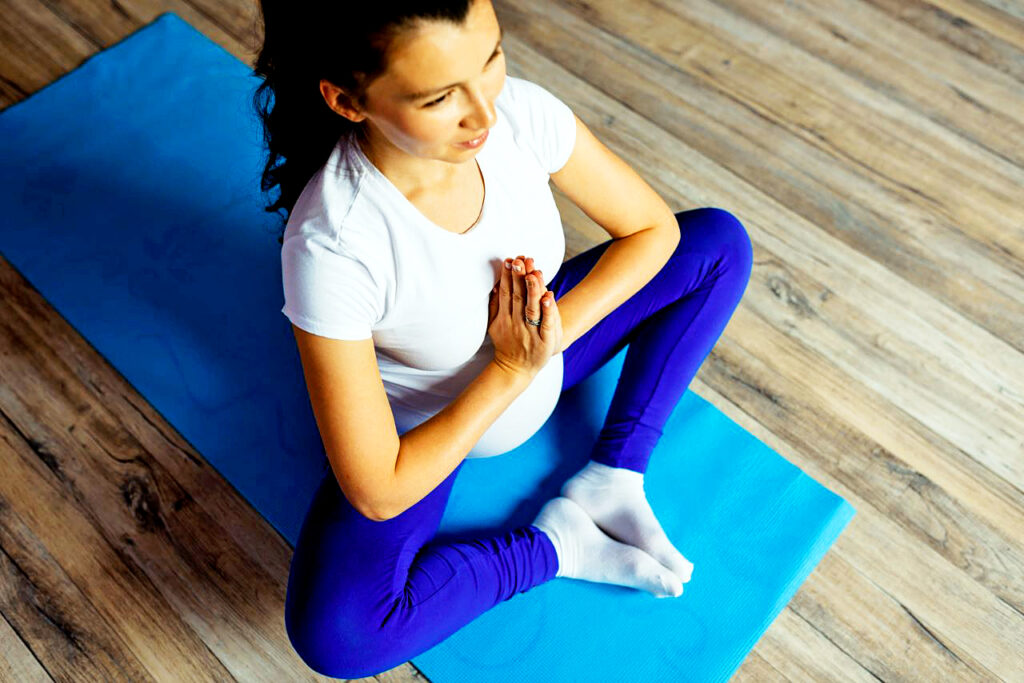
- Sitting on the ground, bring the soles of shoes together, allowing knees to point out to each side.
- Grasping feet or ankles, draw both heels as close to body as comfortable.
- Lean forward slightly and hold that position. Focus on taking big deep belly breaths.
- For an even deeper stretch, press your thighs down with your hands or elbows to bring your knees closer to the ground. Hold that pose and focus on the stretch and your breath.
This is a fantastic hip-opening stretch for the inner thighs, hips, and groin. This pose not only helps to widen your hips, but also helps to ease aches in lower back.
Squats / Garland Pose
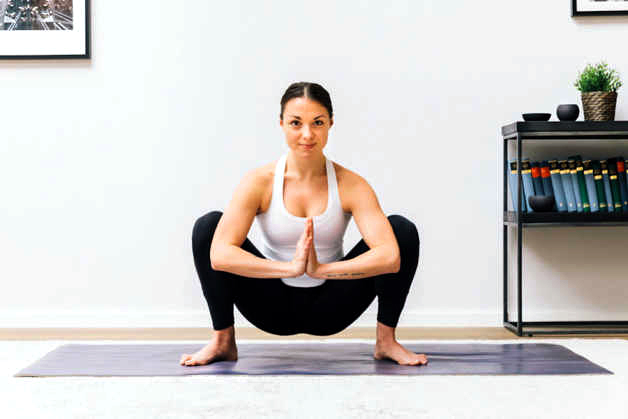
- Stand with feet facing forward or slightly outward, shoulder-width or slightly wider than hip-distance, apart.
- Slowly and fluidly bend your knees and lower your body, extending the arms out in front for balance if helpful.
- Balance your weight on the balls of your heels and pause.
- Breathe and slowly rise back up and then repeat the action
Hip Flexor Stretch
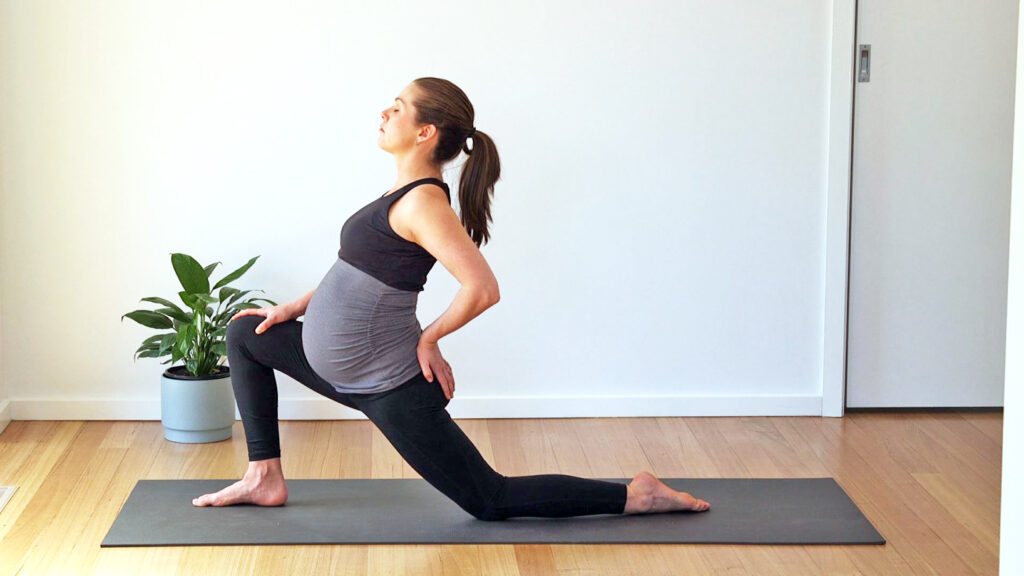
- Kneel on your right knee and put your left foot in front of you, so your leg forms a right angle.
- Put your left hand on your left thigh for balance and put your right hand on your right hip or also on your left thigh.
- Keeping your back straight, lean forward, and shift your body weight to the forward leg. You will feel the stretch in the right thigh.
- Hold for 30 seconds, then switch legs and repeat
Seated Straddle
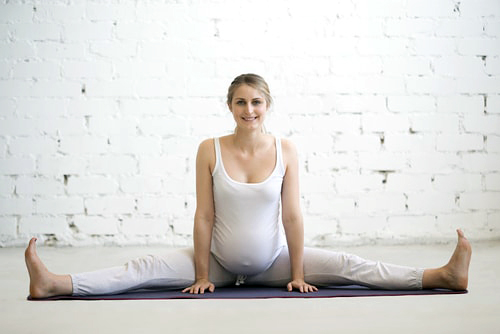
- Extend both legs out wide with your feet flexed.
- Press your pelvis and hamstrings into the floor to help straighten your spine.
- Stay in this position if this is enough of a stretch for the backs of your legs or walk your hands out in front of you.
Strengthening Exercises
- Pelvic bridging
- Squats
- Lunges
- Wall push ups
Third Trimester Specific Exercises
- To begin with the duck walk, one should first stand with feet placed wide apart and both arms at sides. While performing the exercise, it is important that the abdominal muscles should be in tightened position so that the back and abdominal muscles are not accidentally injured.
- Thereafter one is required to lower body from the hips as if individual were about to sit on a chair, ensuring that the heels should be bearing the weight
- This way there will be no damage done to the knees. Clasping hands together in front of chest helps to maintain balance during the duck walk.
- Once in the required position, progress walk forward a few steps at a time without changing squat position, then turn around and walk back to the place from where started and slowly stand up. It is advisable that while performing the duck walk exercise, individual should lean forward to retain balance ensuring that the weight remains on the heels
- Women can also practice the duck walk exercise during pregnancy specifically towards the last few months of the pregnancy. It will help to strengthen their thighs and will allow the baby’s head to move lower easily. Duck Walk is highly effective in facilitating easy and normal labor/delivery



